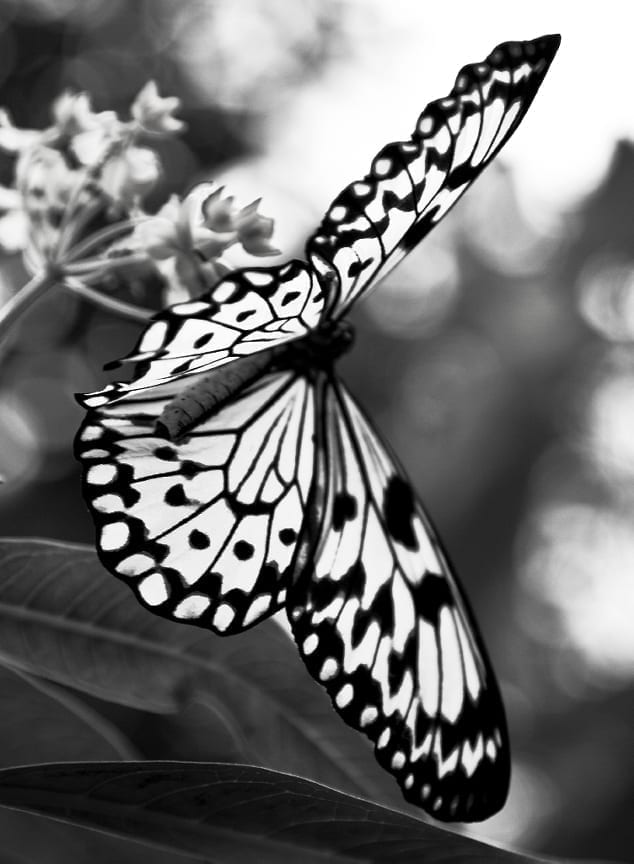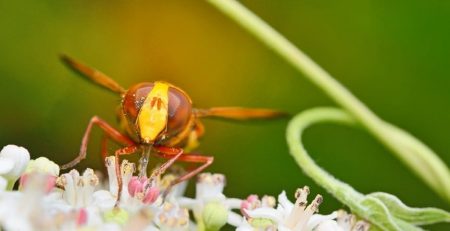New Species of Butterfly Found in Jamaica Calls for Biodiversity Research
Author: Danielle Torrent
GAINESVILLE, Fla. — University of Florida scientists have co-authored a study describing a new Lepidoptera species found in Jamaica’s last remaining wilderness.
Belonging to the family of skipper butterflies, the new genus and species is the first butterfly discovered inJamaicasince 1995. Scientists hope the native butterfly will encourage conservation of the country’s last wilderness where it was discovered: the Cockpit Country. The study appearing in today’s Tropical Lepidoptera Research, a bi-annual print journal, underscores the need for further biodiversity research and establishing a baseline of organisms as more tropical areas suffer habitat destruction.
“My co-authors on this paper, Vaughn Turland and Delano Lewis, are really excited because they think this butterfly has the potential to be a new sort of flagship species for Jamaican habitat conservation, because it’s a black and gold butterfly living in a green habitat, which together comprise the Jamaican national colors,” said study co-author Andy Warren, senior collections manager at the McGuire Center for Lepidoptera and Biodiversity at the Florida Museum of Natural History on the UF campus. “Whether or not a tiny little butterfly is going to attract the type of conservation interest that the giant Homerus Swallowtail inJamaicahas remains to be seen.”
With a wingspan of little more than 1 centimeter, Troyus turneri is about the size of a thumbnail with its wings spread,Warrensaid. The genus was named Troyus for the town ofTroy, which is nearest to the region of the Cockpit Country where it was collected, and the species was named for Thomas Turner, an expert onJamaicabutterflies who contributed to its discovery.
Jamaicais considered one of the most thoroughly researched areas for butterflies in the Greater Antilles, which includesCuba,Hispaniola,JamaicaandPuerto Rico. Until the discovery of T. turneri, researchers believed they knew all the butterflies inJamaica,Warrensaid. The butterfly likely remained undiscovered for so long due to the inaccessible nature of the Cockpit Country, a 247-mile mostly undeveloped tangle of tropical vegetation. The species was described based on one male and one female specimen, collected in 2011 and 2012 within a quarter mile of each another.
“During 2011, after the discovery of the initial female specimen, we had actually written the description, but any time you have just a single specimen, the chance exists that it’s just a real freak of something else,”Warrensaid. “I was really keeping my fingers crossed that more specimens would be found this year. Well, we didn’t get many more, but we got exactly one more and it was the male, so that was a huge relief.”
The fact this new genus was discovered on an island thought to be well-known, 17 years after a new species had last been described, really shows the need for biodiversity studies, said Torben Larsen, a lepidopterist who specializes in skippers.
“There aren’t so many butterflies in the country [Jamaica] and for a new one to turn up, I think it was an absolutely remarkable catch,” said Larsen, who is affiliated with the African Butterfly Research Institute. “It really points to the need for continued and in-depth study of the fauna of butterflies, and in general, to get all of these things caught and put in a museum at least, because they do tend to be in rather special habitats.”
Unlike other Jamaica skipper butterflies that have wings marked with spots of white or orange, T. turneri is dark brown and unmarked, except for a pale yellow band on its hind wing. Researchers used morphological analysis, including comparisons of the insect’s genitalia, and DNA bar coding to determine it represented a new genus.
“We knew right away it was a new species because there’s just nothing else that looks like it, but it took several months to determine that it actually should go in its own new genus,”Warrensaid. “Of all the butterflies that are unique toJamaica, this one is arguably the most unique – every other butterfly on the island has other congeneric species either on another island or on the mainland, but this one doesn’t have any close relatives anywhere.”
There are about 20,000 known butterfly species worldwide.Jamaicahas 135, with 35 species endemic to the country, including T. turneri.
“One of the goals of biologists is to describe the Earth’s species richness before it’s all gone, and of course we never know what we’re going to find in any of these organisms, be it some unique chemical compound that could provide the cure for cancer or any other number of diseases,” Warren said. “We don’t want to lose anything that could be potentially beneficial for ourselves and for the planet.”
Source Article:
http://news.ufl.edu/2012/12/03/jamaican-skipper/














